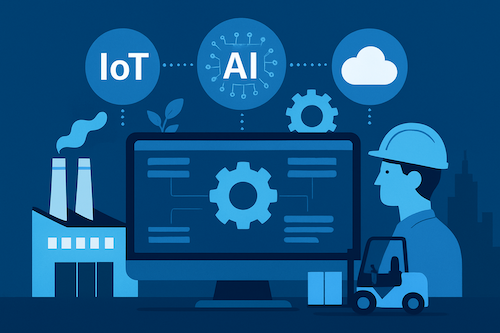
Table of Contents
The unsung heroes of many industrial giants? Their physical assets. From sprawling manufacturing plants to complex utility networks, these assets form the operational backbone. But what does it truly take to master their lifecycle in today’s demanding environment? Many organizations wrestle with optimizing the performance and lifespan of these critical investments. This is where Enterprise Asset Management (EAM) comes into play, and platforms like IBM Maximo have long been significant in this domain. This strategic review will explore Maximo’s role and its importance for modern enterprises, drawing from perspectives forged through years of observing such systems in action.
The Scope of Enterprise Asset Management
So, what’s the big deal with Enterprise Asset Management? It’s far more than just keeping maintenance logs neatly filed away. EAM represents a comprehensive strategy, supported by sophisticated software, for managing an organization’s physical assets across their entire lifecycle. Think cradle-to-grave oversight. This encompasses everything from initial asset acquisition and tracking through to eventual decommissioning.
Key facets include robust work order management, preventive and predictive maintenance scheduling (increasingly vital), inventory control for Maintenance, Repair, and Operations (MRO) parts, and the crucial financial tracking of asset-related costs. Why does this meticulous attention matter? It directly impacts operational efficiency, can lead to substantial cost reductions, aids in regulatory compliance, enhances safety, and ultimately, maximizes the return on those significant asset investments. Isn’t that a target for every asset-intensive business?
IBM Maximo: A Pillar in the EAM Landscape
When we talk about EAM, IBM Maximo invariably enters the conversation. It’s a platform with a considerable history and a reputation for depth. Insights distilled from observing numerous complex system deployments indicate Maximo’s robust capabilities in handling incredibly diverse asset classes and intricate maintenance regimes.
At its core, Maximo offers a comprehensive asset registry, allowing organizations to define asset hierarchies and specifications in detail. Its work management functionalities cover the gamut of planning, scheduling, and executing maintenance tasks. The system is also designed to support both preventive maintenance strategies, based on time or usage, and increasingly, predictive maintenance, often by integrating with IoT sensor data to anticipate failures before they occur.
Add to this its supply chain features tailored for MRO inventory and often extensive Health, Safety, and Environment (HSE) modules, and you have a system clearly built for the heavy hitters in asset-intensive sectors like manufacturing, energy, utilities, and transportation.
Strategic Value and Benefits in 2025
The tangible benefits of a well-implemented EAM system like Maximo are compelling, especially as we look at the operational demands of 2025. Enhanced asset reliability and reduced unplanned downtime are primary wins. Moving from a purely reactive “fix it when it breaks” stance to a proactive one can prevent a world of operational headaches. (Imagine the cascading impact of a critical asset failure during peak production… ouch).
This proactive approach also leads to optimized maintenance costs; you’re performing the right work at the right time, not over-maintaining or suffering the higher costs of emergency repairs. This, naturally, contributes to improved asset longevity and a better return on investment.
Furthermore, the wealth of data captured within an EAM system fuels data-driven decision-making. A perspective forged through years of navigating real-world enterprise integrations suggests this asset data is pure gold, provided it’s managed effectively and analyzed for strategic insights. Maximo is also evolving, increasingly incorporating capabilities to leverage emerging technologies like IoT for real-time monitoring and AI/ML for more sophisticated predictive maintenance analytics. This capacity for integration is key to its ongoing relevance.
EAM’s Role in the Broader Enterprise Ecosystem
It’s important to remember that EAM systems don’t operate in isolation. They are a crucial cog in a larger enterprise technology wheel. How well do they shake hands with other pivotal systems? Critical integration points typically include Enterprise Resource Planning (ERP) systems for financial data (tying asset maintenance costs to the general ledger) and procurement (for MRO parts).
Links to Supply Chain Management (SCM) systems are also common for MRO inventory optimization, and for organizations with geographically dispersed assets, integration with Geographic Information Systems (GIS) can be invaluable. The ultimate aim is to achieve a holistic view of asset performance and its overall financial and operational impact.
Navigating the EAM Journey
Implementing or significantly optimizing an EAM system like IBM Maximo is, without a doubt, a substantial undertaking. It demands more than just a software installation; it’s a strategic commitment to achieving asset lifecycle management excellence.
My observations over the years suggest that success often hinges on a few key elements: crystal-clear objectives from the outset, robust data governance practices (especially for asset master data), and a well-thought-out change management strategy to bring all stakeholders along. The journey towards fully optimized asset lifecycles, powered by capable tools like Maximo, can profoundly influence an organization’s bottom line and its operational resilience.
What’s your organization’s current strategy for its physical MVPs (Most Valuable Property, Plant, and Equipment)?
I always find these discussions around strategic system capabilities fascinating. Feel free to connect with me on LinkedIn.